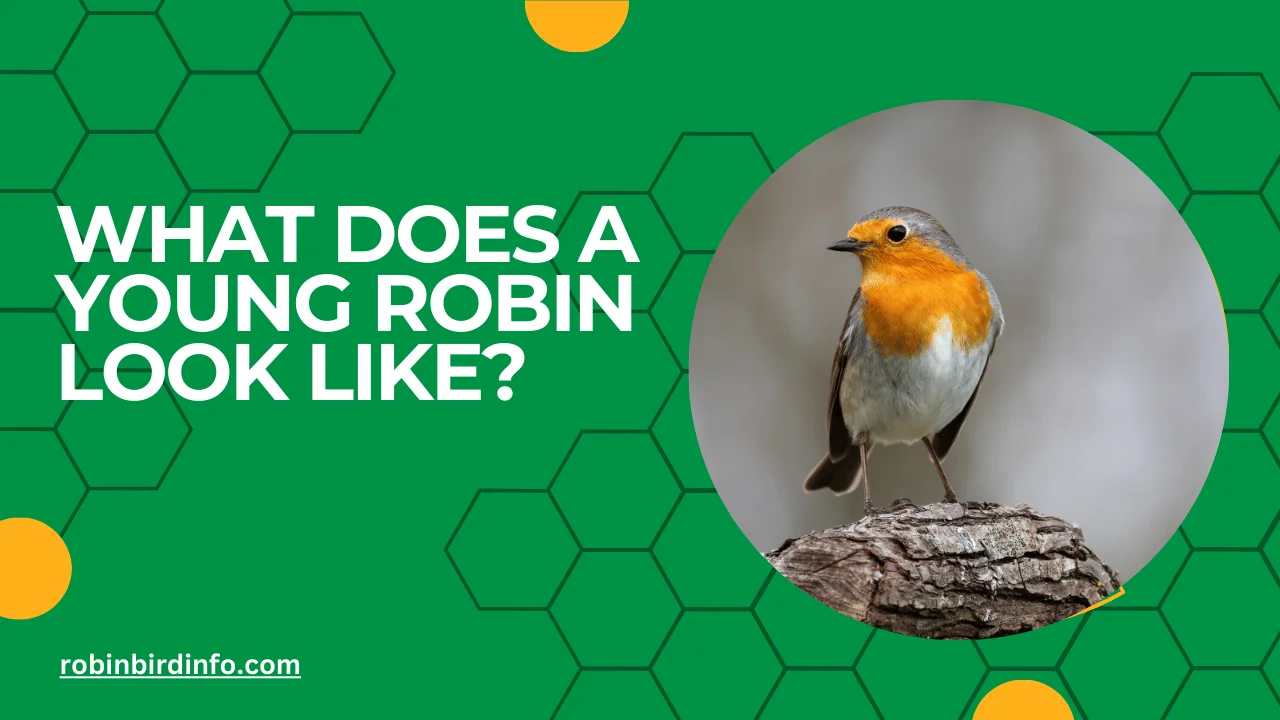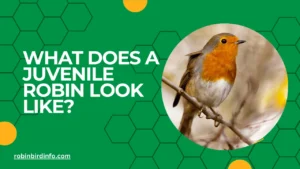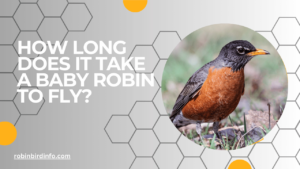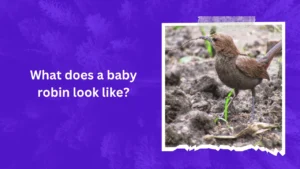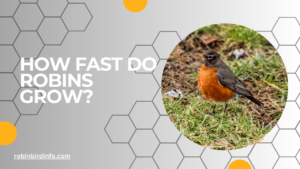Have you ever peeked into a robin’s nest and been surprised by the sight of what lies within?
Unlike the familiar red-breasted adult, young robins look more like a cross between a ping pong ball and a dust bunny. But fear not, curious nature enthusiast! This seemingly awkward stage is a crucial part of a robin’s remarkable journey from helpless hatchling to independent bird.
Ever wondered how these tiny bundles of fluff transform into the confident birds that grace our gardens? This blog post delves into the fascinating world of young robins. We’ll explore their surprising appearance at different stages of development, from their blind and featherless beginnings to their first attempts at flight.
Along the way, you’ll discover the incredible growth spurt and the dedicated parenting that allow these feathered youngsters to take to the skies. So, grab your binoculars and get ready to witness the extraordinary metamorphosis of a young robin!
Contents
- 1 Section 1: The Nestling Stage
- 2 Section 2: The Fledgling Stage
- 3 Section 3: Juvenile Plumage
- 4 Section 4: Behavioral Differences
- 5 Section 5: Conservation Implications
- 6 Conclusion
- 7 FAQ’s
- 7.0.1 How long do baby Robins stay in the nest?
- 7.0.2 What happens to fledgling Robins after they leave the nest?
- 7.0.3 What are the threats to juvenile Robins?
- 7.0.4 How can I help protect juvenile Robins?
- 7.0.5 What is the role of habitat loss in the survival of juvenile Robins?
- 7.0.6 How long does it take for a juvenile Robin to become an adult?
Section 1: The Nestling Stage
Newly hatched Robin nestlings are tiny, featherless, and blind. They are completely dependent on their parents for survival.
Over the next few weeks, they undergo rapid growth and development. Their feathers begin to grow, providing warmth and insulation. As their feathers develop, they become more mobile and start to explore the nest.
Parental care is crucial during this stage. Both the male and female Robin work tirelessly to feed and protect their young. They bring a variety of insects, worms, and berries to the nest, which they regurgitate into the mouths of the hungry nestlings.
Section 2: The Fledgling Stage
Once nestlings are ready to fledge, they leave the nest and begin to explore their surroundings. Fledgling Robins are not fully developed and still rely on their parents for food and protection. They are often clumsy and may fall from branches or struggle to fly.
Parental guidance is essential during this stage. Adult Robins continue to feed and protect their fledglings, teaching them important survival skills. Fledglings spend their time practicing flying, hopping from branch to branch and taking short flights.
Section 3: Juvenile Plumage
Juvenile Robins have a distinct appearance compared to adult Robins. Their plumage is often duller and less vibrant. They may have brown or gray feathers, lacking the bright red breast of adult male Robins.
Molting is a natural process that allows birds to renew their feathers. Juvenile Robins undergo several molts as they mature. With each molt, their plumage becomes more similar to that of adult birds.
It typically takes several months for juvenile Robins to develop adult plumage. During this time, they continue to learn and grow, developing the skills they need to survive and reproduce.
Section 4: Behavioral Differences
Foraging behavior differs between juvenile and adult Robins. Juvenile Robins often rely on their parents for food, but as they become more independent, they learn to forage on their own. They may explore different feeding techniques and habitats to find food.
Social behavior also changes as Robins mature. Juvenile Robins may form flocks with other young birds, and they may engage in social interactions, such as chasing and play-fighting. As they reach adulthood, they may establish territories and form pair bonds.
Territorial behavior develops gradually in juvenile Robins. As they mature, they may start to defend small territories and engage in territorial disputes with other birds. However, their territorial behavior is often less intense than that of adult males.
Section 5: Conservation Implications
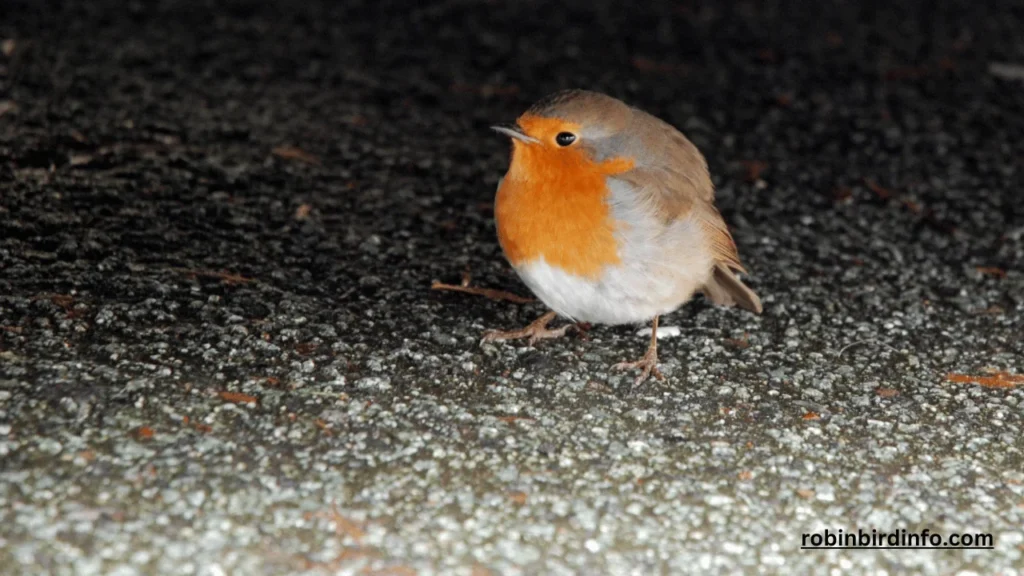
Habitat loss and fragmentation can negatively impact juvenile Robin survival and development. Loss of suitable nesting and foraging habitats can limit the availability of food and shelter for young Robins.
Predation and disease are significant threats to juvenile Robins. Cats, hawks, and other predators can prey on young Robins. Diseases, such as avian malaria, can also affect their health and survival.
Conservation strategies are essential to protect juvenile Robins. By creating and maintaining bird-friendly habitats, reducing pesticide use, and participating in citizen science projects, we can help ensure the survival of these young birds.
Conclusion
The journey from nestling to adult Robin is a remarkable transformation.
By understanding the challenges faced by juvenile Robins, we can appreciate the complexity of their development and the importance of protecting their habitats. By taking steps to conserve bird populations and promote bird-friendly practices, we can help ensure the survival of future generations of Robins.
FAQ’s
How long do baby Robins stay in the nest?
Baby Robins typically stay in the nest for about 13-15 days before fledging.
What happens to fledgling Robins after they leave the nest?
After fledging, young Robins continue to be fed and protected by their parents for a short period. They gradually become more independent and start to forage for their own food.
What are the threats to juvenile Robins?
Juvenile Robins face various threats, including predation by cats, snakes, and birds of prey. Adverse weather conditions, such as heavy rain and extreme cold, can also impact their survival.
How can I help protect juvenile Robins?
You can help protect juvenile Robins by providing a bird-friendly environment with plenty of food and water sources. Avoid using pesticides, as they can harm insects and other wildlife. You can also participate in citizen science projects to help monitor bird populations and contribute to conservation efforts.
What is the role of habitat loss in the survival of juvenile Robins?
Habitat loss and fragmentation can reduce the availability of food and nesting sites for Robins. By protecting natural habitats and creating bird-friendly landscapes, we can help ensure the survival of juvenile Robins.
How long does it take for a juvenile Robin to become an adult?
It typically takes several months for a juvenile Robin to develop adult plumage and reach sexual maturity. During this time, they continue to learn and grow, developing the skills they need to survive and reproduce.

